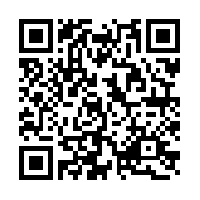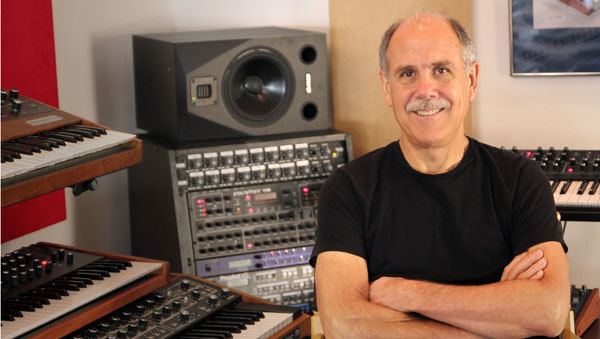The passing of synth pioneer David J Smith is sad news. His legendary Prophet synth brand died out in the ’80s after a decade of world domination, but has been reborn like a Phoenix in recent years and has grown in popularity, riding the wave of analog nostalgia with its more reliable digital controls warm power. Dave Smith dies while on tour, and musicians get to know the glory days from the “Father of Prophet”.
Born in Northern California in 1950, David J Smith earned degrees in Computer Science and Electrical Engineering from Berkeley University in the Bay Area. It was the combination of these two separate fields that proved his strength in taking over the leadership from Bob Moog, the father of synthesizers, whom Dave bought in 1972 while still in college.
Birth of Sequential
Dave’s first product was an analog sequencer running Minimoog, and his company, Sequential Circuits, was also founded in 1974. Dave quit his day job in the computer industry to run Sequential Circuits full-time in 1977, and later the same year introduced the Prophet 5, a microprocessor-controlled polyphonic synth. The sound architecture of this synth is a simplified Minimoog (it’s reduced from three oscillators to two, and the filter doesn’t sound quite as full), but that’s actually great for polyphonic instruments (when Bob will eventually When the polyphonic Memorymoog came to market, many producers complained that it engulfed other sounds in the mix).
Sequential Prophet-5 REV 4
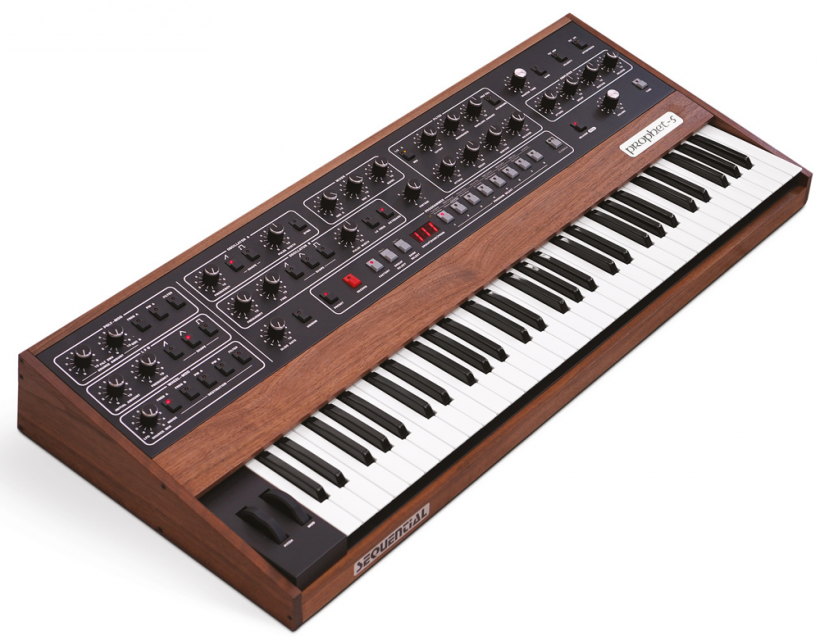
Prophet 5’s truly landmark innovation is the ability to store patched parameters digitally, recall them at the touch of a button, and an amazing feature called Auto-Tune (Minimoog users Often had to stop and manually adjust their instruments between songs, as the synthesizers could shift pitch when the temperature changed).
Of course, not all Prophet 5 owners have discovered its full capabilities. Phil Collins bought one from Argents (then the exclusive UK distributor) and allegedly recorded the entire Face Value (including the legendary “In The Air Tonight” single), but only found the first eight sounds because he Didn’t realize the Bank key cycle could switch to more preset sounds.
Many synths take advantage of this feature, allowing up to 40 different sounds to be used in a concert without laborious manual patch changes. Japan’s Richard Barbieri played the abstract musical concept of “Ghosts” in a live performance with different tonal transitions between lines. Genesis’ Tony Banks dropped a few keyboards on the Duke tour in 1980 because he could change completely different analog sounds with a single button on the Prophet.
MIDI
In 1981, Dave was fascinated by the idea of a digital language that would allow musical instruments and even computers to talk to each other. Originally known as the Universal Synthesizer Interface (USI), Dave submitted a paper to AES after meeting with competitors Tom Oberheim and Roland’s Ikutaro Kakehashi. Eventually, when the standard was hammered out, it was renamed MIDI (Musical Instrument Digital Interface) and the rest is history. The real beauty of MIDI is that, like Tim Berners-Lee’s World Wide Web, Dave Smith and his competitors/later collaborators gave MIDI to the world for free while others got rich for their generosity . Suddenly, musicians took a giant leap in synthesis and sound production, all because keyboards, synthesizers, and computers were linked so that they could communicate with each other and process data.
Sequential Circuits pioneered the computer MIDI interface, in the form of the Model 64 interface, which allowed the then-popular Commodore 64 to talk to synthesizers. It comes with a free firmware sequence, including real-time recording and raw quantization. But the biggest beneficiary was Atari, which sold hundreds of thousands of MIDI-equipped 1080STs, Mega 2 and 4, and Falcon computers and dominated the European music market (until one only wanted Atari as a game). Brand people bought the company and shut down all computer manufacturing). In their home country of America, new companies like Mark Of The Unicorn were also born making MIDI interfaces for Macs and PCs.
But the days of analog synthesis seem to be numbered. Ironically, a Prophet 600 was seen at NAMM’s Roland booth in 1983 connected to a Roland Jupiter 6 via MIDI (even the fact that Sequential brought the Prophet to their booth seemed ominous!). Later, when Yamaha released the all-digital DX7 with MIDI, Sequential’s European sales manager Roy Goudie (joined from Moog, who sold all the last Memorymoogs in California) came up with a strategy that almost worked: “Every DX7 user needs A Prophet 600 MID because it brings a little warmth to the DX7’s cold heart!”
But Dave Smith pulled out the last great analog synth in his arsenal—the dynamic and pressure-sensitive Prophet T8, which has as many sounds as the latest synths from Oberheim, Moog, Elka, and the expressiveness of a Yamaha. The expressiveness of the CS80 is comparable. A decade after its release, which also added Split/Layer functionality, Dave’s lifelong collaborator John Bowen (Sequential’s presenter) used a neat trick of bringing out the ninth harmonic through resonance to create a usable piano sound. It’s the best analog synth ever made, and the synced lead solo literally screams like a stuck pig when you’re leaning against the keys. The writer, intrigued by these voices, applied for a job at Sequential Europe and was offered a whopping £4,700!
People lining up to buy the T8, especially in the UK where more sales than any other region: Genesis’ Tony Banks replaces his Prophet 10 with a T8; Billy Curry goes from a Prophet 5 to a T8 to take it to the Top Of The Pops play Ultravox’s “Loves Great Adventure”; Level 42’s Mike Lindup finally replaces his trusty Prophet 5 on the World Machine tour; Thompson Twins buy three, one for each of the regular members, and have them before the national tour The afternoon showed up in music stores across the UK to show how they were using it for that evening’s concert. Tears For Fears then purchased two T8s and invited half of Sequential’s crew to the San Francisco Bay Area stop of the “Songs From The Big Chair” tour.
But the DX7, with its sixteenth-note polyphony and endless electric pianos, bells and slap bass, has caught the attention of jazz players who can express their Emin9 augs with a flat fifth chord that sounds slightly less like Rhodes or Wurlitzer. There are differences, but only a third of the price. Combined with a huge Japanese marketing budget, the analog legend was guillotined by the digital Dave.
sampling
Dave Smith saw the success of Emu, especially the Emulator II with its 8-bit companding system, but he wasn’t discouraged, he knew better sound quality could be achieved in sampling. His Prophet 2000 used 12-bit linear sampling to significantly outperform EII sound quality at a very low price (RRP £1,999 including VAT, not £10,000) and was an immediate success; it was only more than the Ensoniq Mirage £600 and offers an exceptional quality original disk, while the Ensoniq Mirage is just cheap and can’t be sampled by a normal muso.
Musicians can make their own samples on the Prophet 2000, loop them, and also automatically search for zero crossings that eliminate Click as loop points. Sales of Mirage and EII were stagnant, and for six months the Prophet 2000 was the only player on the market. But then products from Japan flooded in, Akai S900, Roland S-50 and S-10, Korg DSS-1 (only Yamaha entered the sampling market with the TX16W until 1988), and the Prophet 2000 got lost in the shuffle direction. Although it sounds much better than all Japanese products, and comes with an orthodox Prophet filter, all other competitors have user-friendly two-line LCD displays, and the Prophet’s two-character LED uses hex for 0 -127 is 00 to FF, and the operating experience is far from checking.
Dave upgraded the design with a Prophet 2002 rack, getting rid of the dreaded membrane switches and replacing them with pushbutton switches with built-in LEDs to show activation, doubling the memory, and a more pleasing primary blue and black front panel, Instead of pastels from 2000.
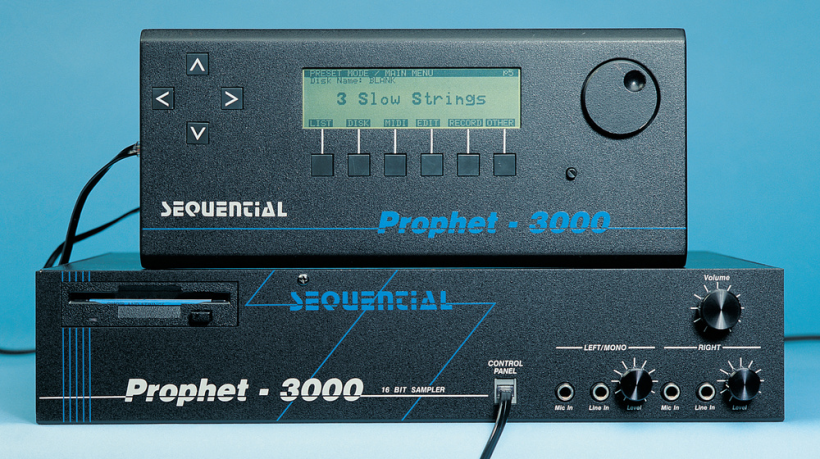
But Akai wins the game because people buy with their eyes, not their ears. Prophets outsold all Roland and Korg samplers, but the Akai S900 outsold all others combined.
Dave teamed up with another Sequential engineer, Chris Meyer, to use Prophet VS again for compositing. Chris Meyer uses PPG as his inspiration and the joystick as a way to control real-time modulation between one waveform and another. People were raving about it again, but the Roland D-50 followed, quickly surpassing its sales.
The last product Dave Smith named after the original Sequential Circuits was the Prophet 3000, a full 16-bit stereo sampling rack with a proper remote control interface that rivaled the CD quality of the Emulator III and looked like a A product that might save the company. However, production could not proceed in time, and to avoid facing bankruptcy, Dave sold the company to Yamaha, which was looking for a way to play samples on FM synths.
Production of the first Prophet 3000s went ahead and hit the market under Yamaha’s ownership, but Dave had had enough, retreating from the public eye into his track and field and licking his wounds, climbing mountains with Roger Linn, his Drum machines began to reappear under the Akai brand. The shockwave was so huge that it swept the industry at least as big as when Bob Moog lost control of the company (and Oberheim would then sell the entire company to Gibson in the most disastrous way). Dave was the president of Yamaha DSD Group, which produced a mini VS on the Yamaha SY22. When ownership of Sequential was transferred to Korg, Dave oversaw the Korg R&D team in California, which designed the very successful Wavestation.
It was Korg who reaped the benefits of the core Sequential development team and launched a series of successful products such as Prophecy, Z1, and OASYS PCI cards running on Mac and PC, and finally the OASYS keyboard, and eventually John Paul Jones and Keith Emerson replaced it with their GX-1. But Dave, increasingly dissatisfied, quietly left to focus on a new concept that fascinated him: pure software compositing.
After a while, Dave reappeared in the public eye with his synonym Seer Systems Virtual Synthesizer (sponsored by Intel). The program ran only on PCs and was marketed as a software-only product throughout the 90’s. Licensed by Creative Labs, the software becomes the synthesis engine in the popular Sound Blaster AWE 64 PCI sound card and is used to play MIDI files.
Dave brought Seer’s in-house product to the high end with the Reality soft synth, on which Dave himself wrote all the low-level optimized floating-point arithmetic for the synth, and won many accolades throughout the tech press.
Prophet Revival
As the nostalgia market grew and analog digital controls became more reliable and cheaper, everyone was after Dave to revive the Prophet brand.
He gave a big presentation at Dave Smith Instruments’ 2002 NAMM show. While Yamaha still carries the Sequential brand name, Dave is free to refer to the Prophets keyboards he makes as a different model. Then in a much-lauded move in 2015, Yamaha returned the brand name Sequential to Dave, and in 2018 Dave Smith Instruments became Sequential again (but no Circuits, presumably because everything is now on a chip rather than a board discrete circuits).
In 2016, Dave brought former competitor Tom Oberheim into DSI, and later added the OB-6 design, selling and marketing it through the same channels. At the same time, the number of sounds continues to increase, and products are added using the same basic sound architecture that Dave has made famous for 40 years, first used in the Prophet 5 and Prophet 10.
Winter NAMM presents a mysterious supper club group called Grand Old Men Of MIDI, formed around Dave and Tom, the inventors honored to be brought to dinner for the first time in 2019. John Bowen, Dave’s longtime collaborator, joined in 2020. Dave continued to promote not only his own products, but also the synthesizer concepts he developed with Bob Moog and Tom Oberheim. It was during one of these tours that he had to succumb to a debilitating disease that has yet to be officially named. For the past few years, he has been walking on crutches.
Dave Smith has brought so much to the world, countless musicians and instrument developers have benefited from his MIDI technology and synthesizer concepts, and his name is worthy of being missed. I have been busy all my life, I hope the old man can have a good rest.
This article comes from the 198th issue of “Midifan Monthly” in September 2022
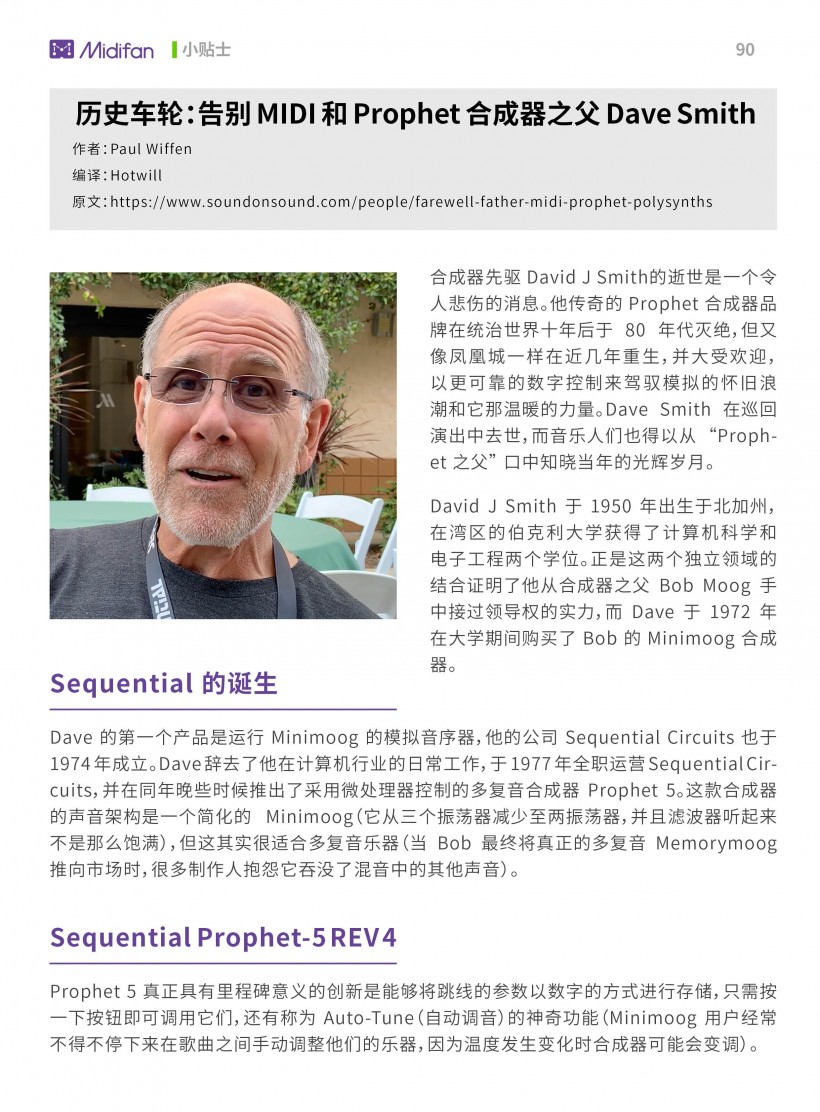
You can download the Midifan for iOS app to read on your phone or tablet (search for Midifan in the App Store directly, or scan the QR code below to download it directly), and download and read on your iPad or iPhone.
